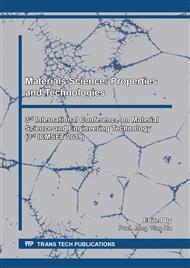p.69
p.73
p.79
p.85
p.91
p.97
p.103
p.109
p.115
Drying Shrinkage Performance of Ambient Cured Blended Alkali-Activated Concrete
Abstract:
The environmental burden due to the production and use of Ordinary Portland Cement(OPC) has become significant in terms of resource use and atmospheric emissions. Alkali-activatedbinders have gained significant attention in recent years as a possible alternative to OPC. Concreteundergoes physical and chemical changes through its lifetime. These changes affect propertiesresulting in either increase or decrease of performance and serviceability. Concrete contracts due tothese changes leading to shrinkage. Shrinkage induces tensile stresses within the members, whichleads to a tendency of cracking, resulting in compromised durability. Shrinkage behavior analysis ofAlkali-Activated Concrete (AAC), without any external loading, is crucial to assess as there is limiteddata available. To further test for shrinkage under restraint conditions, mix development of AAC isnecessary. Mechanical properties and drying shrinkage potential of AAC are evaluated and comparedwith OPC concrete. Basic properties assessed to understand the performance of AAC are compressivestrength, splitting tensile strength and free drying shrinkage. Drying shrinkage test is performed as perASTM C157 for 90 days. Furthermore, the effect of different curing regimes (dry curing, three daysmoist curing, and seven days moist curing) on the mechanical properties and shrinkage is evaluated.The results show that drying shrinkage of AAC exhibit similar behavior to that of OPC concrete whilehaving better early-age strength under moist curing regimes.
Info:
Periodical:
Pages:
109-114
Citation:
Online since:
August 2019
Authors:
Keywords:
Price:
Сopyright:
© 2019 Trans Tech Publications Ltd. All Rights Reserved
Share:
Citation:


